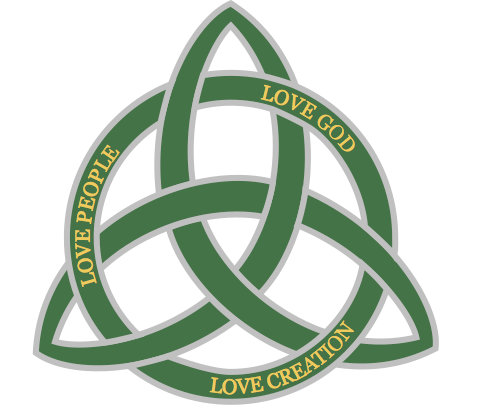Speaking Life
Quilling Art by Annabel Lingle
By Andrea Lingle
My patin and my chalice are the depths of a soul laid widely open to all the forces which in a moment will rise up from every corner of the earth and converge upon the Spirit. Grant me the remembrance and the mystic presence of all those whom the light is now awakening to the new day.
(Chardin, The Mass on the World, “The Offering”)
If you remove the yoke from among you,
the pointing of the finger, the speaking of evil,
if you offer your food to the hungry
and satisfy the needs of the afflicted,
then your light shall rise in the darkness
and your gloom be like the noonday.
Isaiah 58:9b–10
Fact: a paper bag used to bring home various comestibles is a grocery bag, sack, or, apparently, a poke. It is not a robot mask.
Fact: a corrugated box is used to transport goods across large distances with minimal damage. It is not a runaway train.
Fact: wooden stools are admirable places upon which to perch. Fitted sheets are ingenious, if unwieldy, ways to keep a sheet between a sleeper and a mattress. The combination of these two are not a shelter in the jungle.
I have a theory. I discovered it among the stones of Iona and in the clear waters of the Western North Carolina rivers. I heard it whisper to me in the fecundity of my compost-laden garden. I see it glimmer in the eyes of my dogs. All of creation dances. The whole thing is ensouled: the spark of the Creator is embedded in it all.
But that does not exactly mean that it has a purpose. It does not imply that there is a definite direction to this great chaotic expanse. There might not be some grand plan, but, nevertheless, it seems undeniable that there is will. A pressing toward. A great urge. Toward…what?
Is it possible that you are here to see beyond the immediate? To see what could be? To bend life toward justice?
A creative act is to see beyond the physical nature of what is into the ineffable realm of what could be. Perhaps we could call that faith. Whether it be making sculpture out of discarded items or teaching children in discarded neighborhoods, creativity is faith. Sometimes things break, fall in on themselves, or wilt. Sometimes the grand scheme crashes around you under the weight of didn’t, can’t, or won’t. Didn’t, can’t, and won’t feel like the enemies of creativity, but they are simply the reality of existing in a world. Here, in this world, spiraling through space at unimaginable speed, chaos dictates the chatter. We must, in acts of defiant creation, sculpt, teach, and make. Sometimes we can make sense out of the tangled weave, sometimes we can endow the crush of life with beauty, and sometimes we can neither make sense or beautify life—sometimes we can only reveal or bring attention to the shattered bits. Injustice, harm, abuse: these things defy patina. They are scars that must not be glossed over or beautified. They must be revealed, their victims held dear.
Art, creativity, and the common life are a privilege and responsibility. What would happen if we learned to live creatively by removing the yokes of poverty, limited access, and excess from our communities? What if art included removing the pointing fingers of exclusion, gate-keeping, and fault-finding? What if faithful living meant refraining from speaking of those whose bumper-stickers remind us that our way of thinking is not the totality of what is?
It would, indeed, be a mighty act of creativity to craft our language into that which opens, enlivens, and affirms even with those we disagree with.
It seems like a good place to start.

